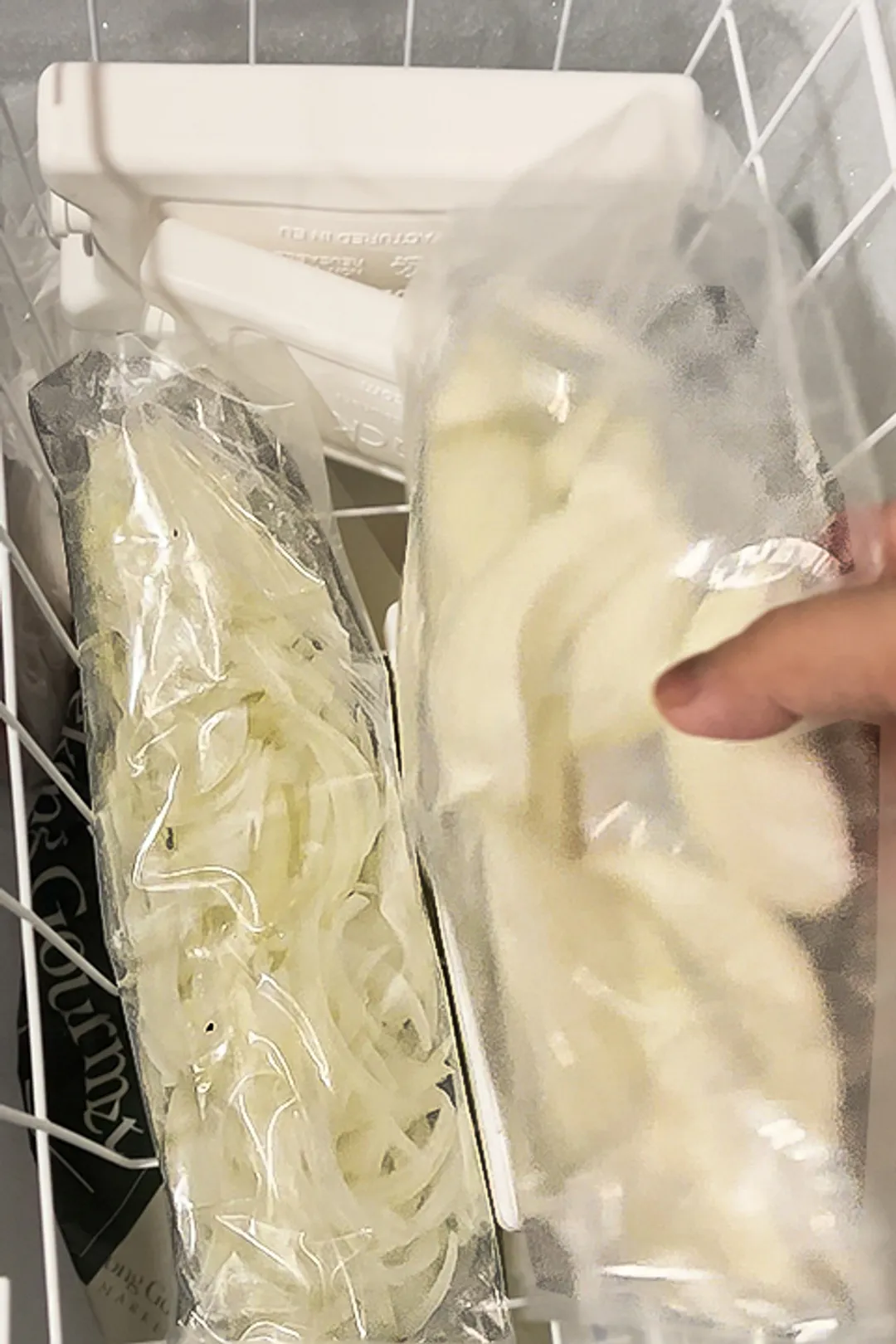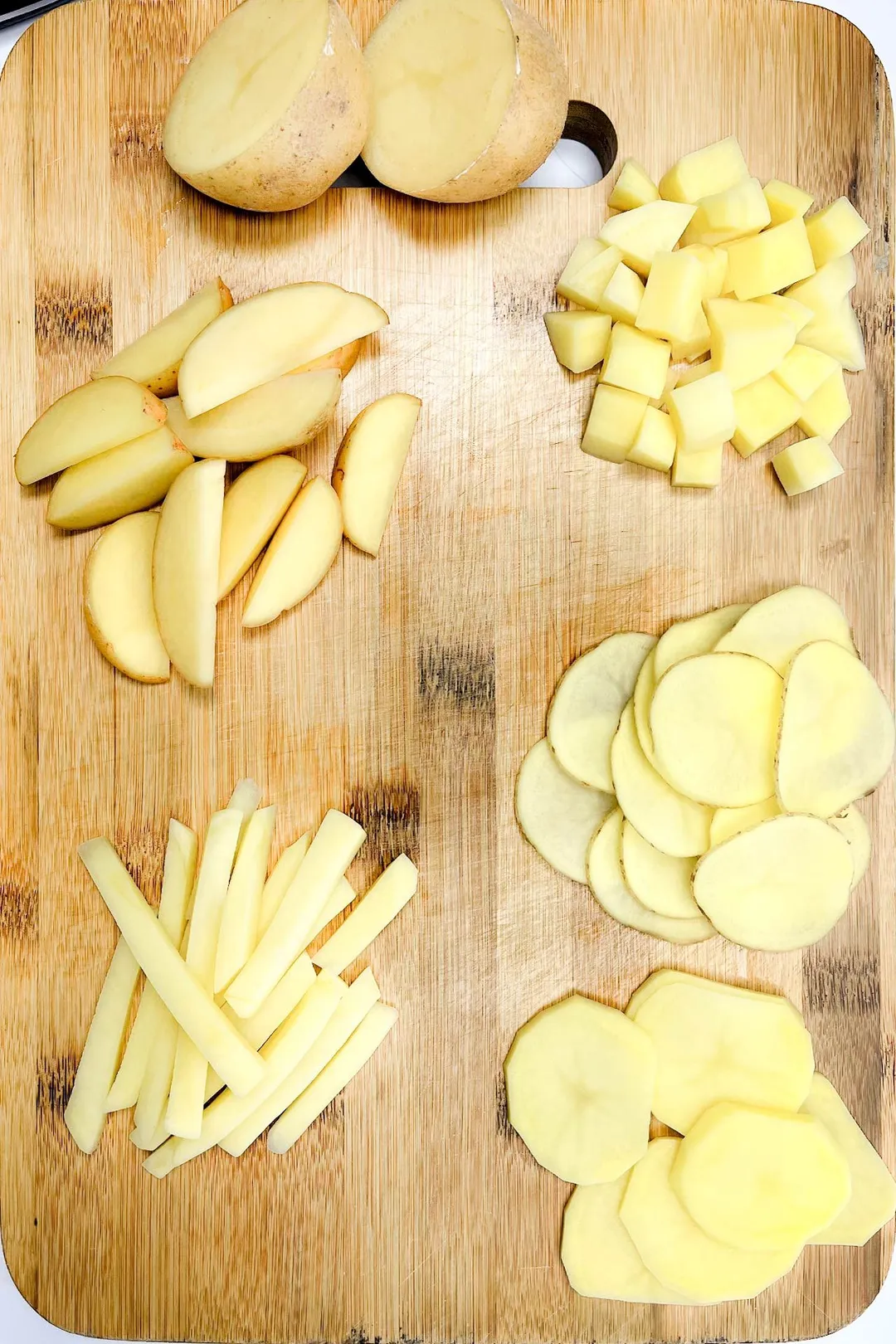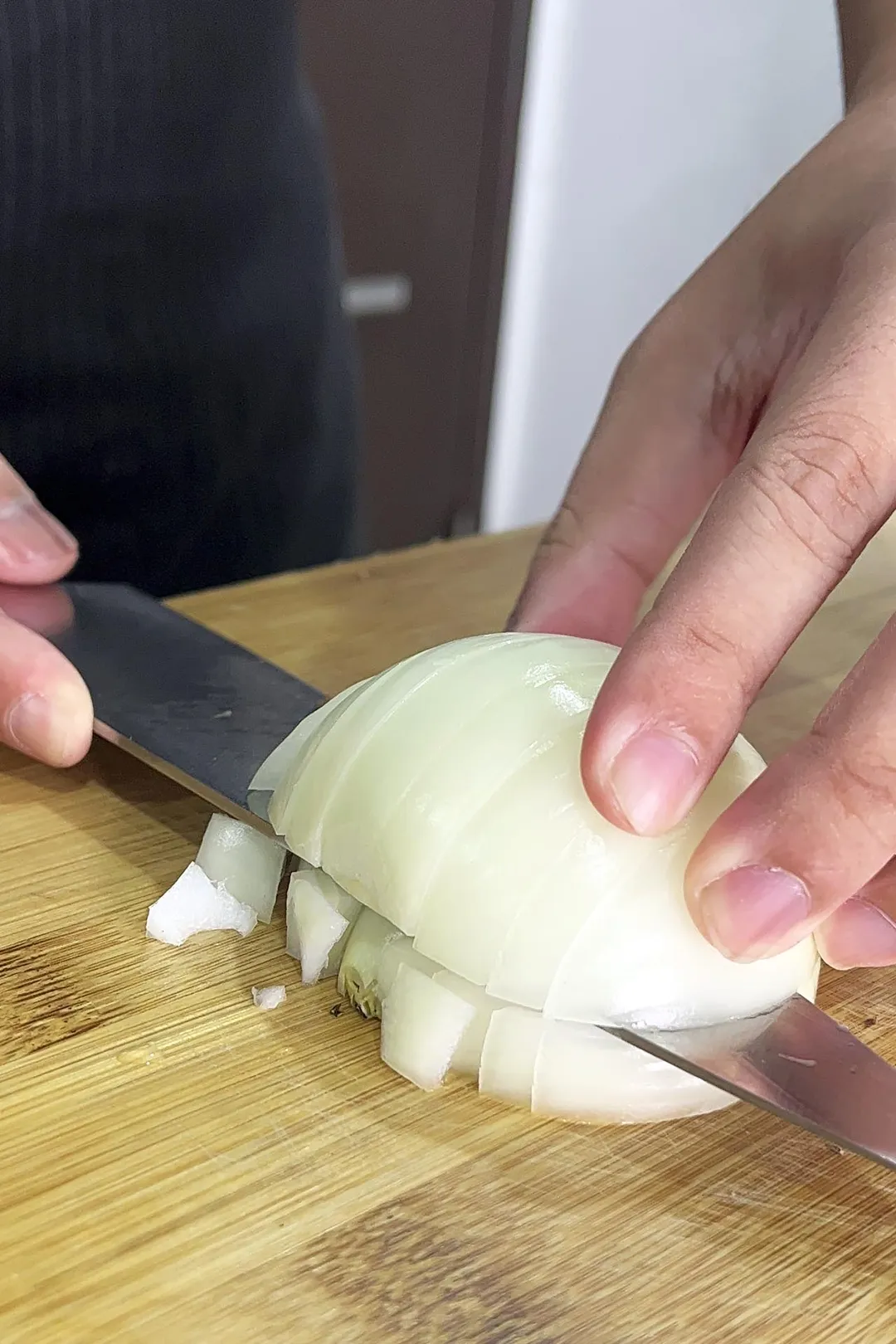‘Would they last that long? Would they stay crisp? Why can’t they be kept on the counter like always?’
These are likely the questions you have in mind, because they were ours too, when we first heard about the idea. Since the dawn of time we’ve been storing whole onions in a basket and chopped ones in the fridge, so freezing just seems unnecessary and even problematic.
However, there are good reasons why this method is legitimate and sometimes comes in handy. This article will show you those reasons as well as give you the details of how to freeze onions, in two different ways.
Why Freezing?
Onions are fresh produce, so be it on the counter or in the vegetable compartment of your fridge that you keep them, they will still rot in time. It’s easy to store just a couple — you’ll use them up before you know it, but if we’re talking 20 or more, the problem begins to present itself.
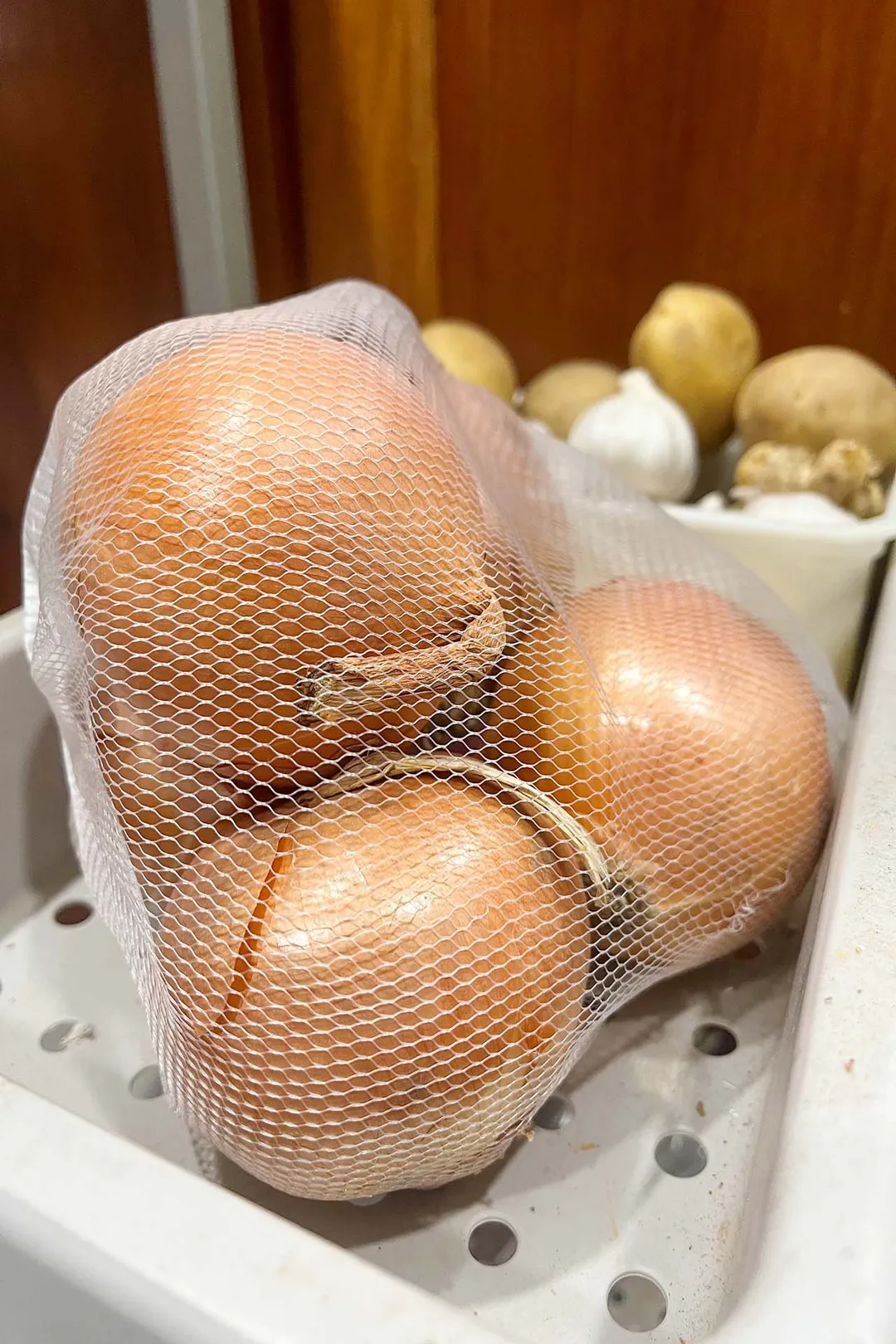
That’s where the idea of freezing comes in. Once chopped or sliced, the onions can be placed into bags, stored in the freezer, and conveniently used within the next 3 months.
Furthermore, frozen onions won’t make you cry during prep. It’s a substance called ‘propanethial S-oxide’ within the onion cells that, if come into contact with the eyes, triggers the body’s defensive mechanism causing a flood of tears. When the onion is frozen, the irritant doesn’t spread as much, hence the chance of it affecting your eyes is significantly reduced.
The downside to freezing, however, is that it takes away the vegetable’s crunchy texture. This crisp texture comes from the onion’s cells but, when frozen, the water in the cells expands and pops them like bubble wraps. With its crispness gone, the onion might no longer make an ideal salad topping, but it is still good for sautéing, caramelizing, soups, or casseroles.
How to Peel and Cut an Onion for Freezing
Begin by slicing one onion in half, top-to-bottom, and peeling the outer layer.
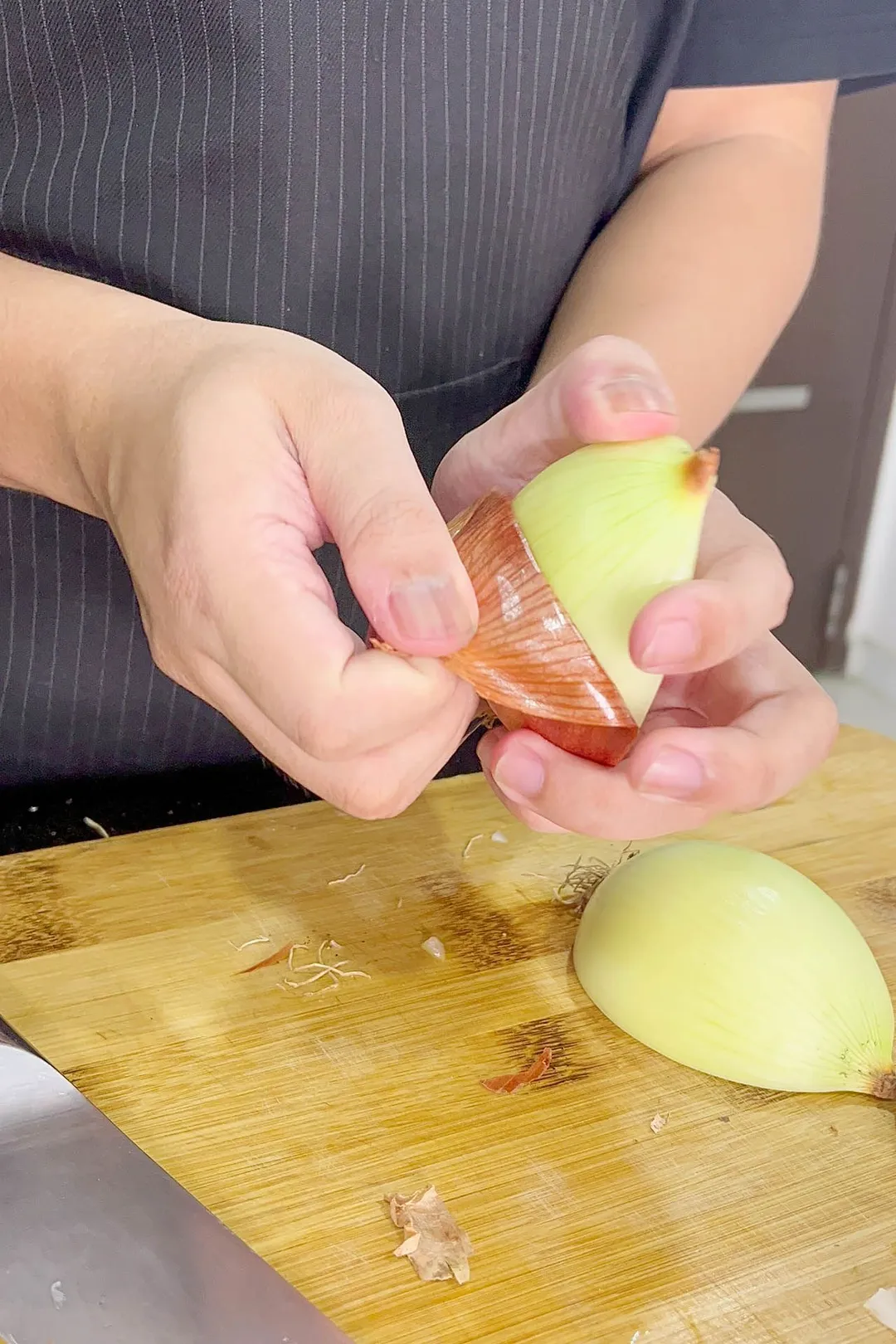
From there, you can cut the onions however you want.
Freeze Onions
Once all are chopped, transfer everything to containers, label them with dates, and place them in the freezer.
We prefer using sealable bags. The onions can be spread out into a thin layer, which makes removal a lot easier than if they’re frozen as a block.
We often measure onions in ounces, so if you often cook with our recipes, place exactly 2 ounces in each bag. You can then easily measure out exactly the amount you need.
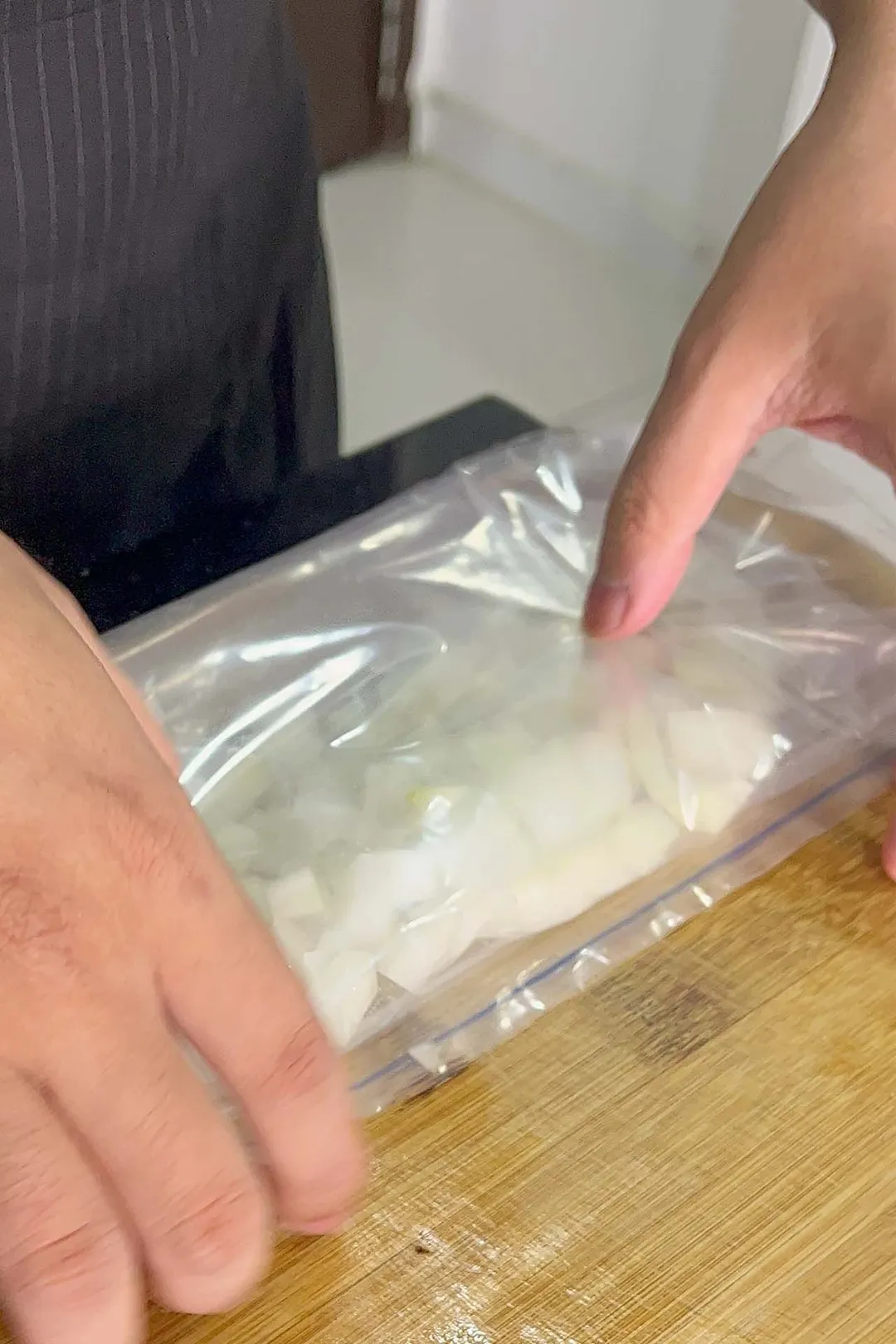
How to Freeze Onions, Whole
You can blanch onions, let them cool, and place them straight into your freezer, no chopping or slicing required. They’ll keep for 3 months, and can be conveniently pulled out for cooking.
Frozen whole onions, however, are pretty darn difficult to cut into, so let them sit at room temperature for about 15 minutes. They’ll be soft enough to work with. Don’t completely thaw onions, as they’ll be too mushy to cut.
Why Blanch Onions and How to Do It
Blanching softens the onions slightly, making them a little easier to slice into.
Before blanching, place the onion root first on the cutting board, then quarter it, stopping the knife halfway through. This exposes the inside and makes sure that it’s just as partially-cooked as the outside.
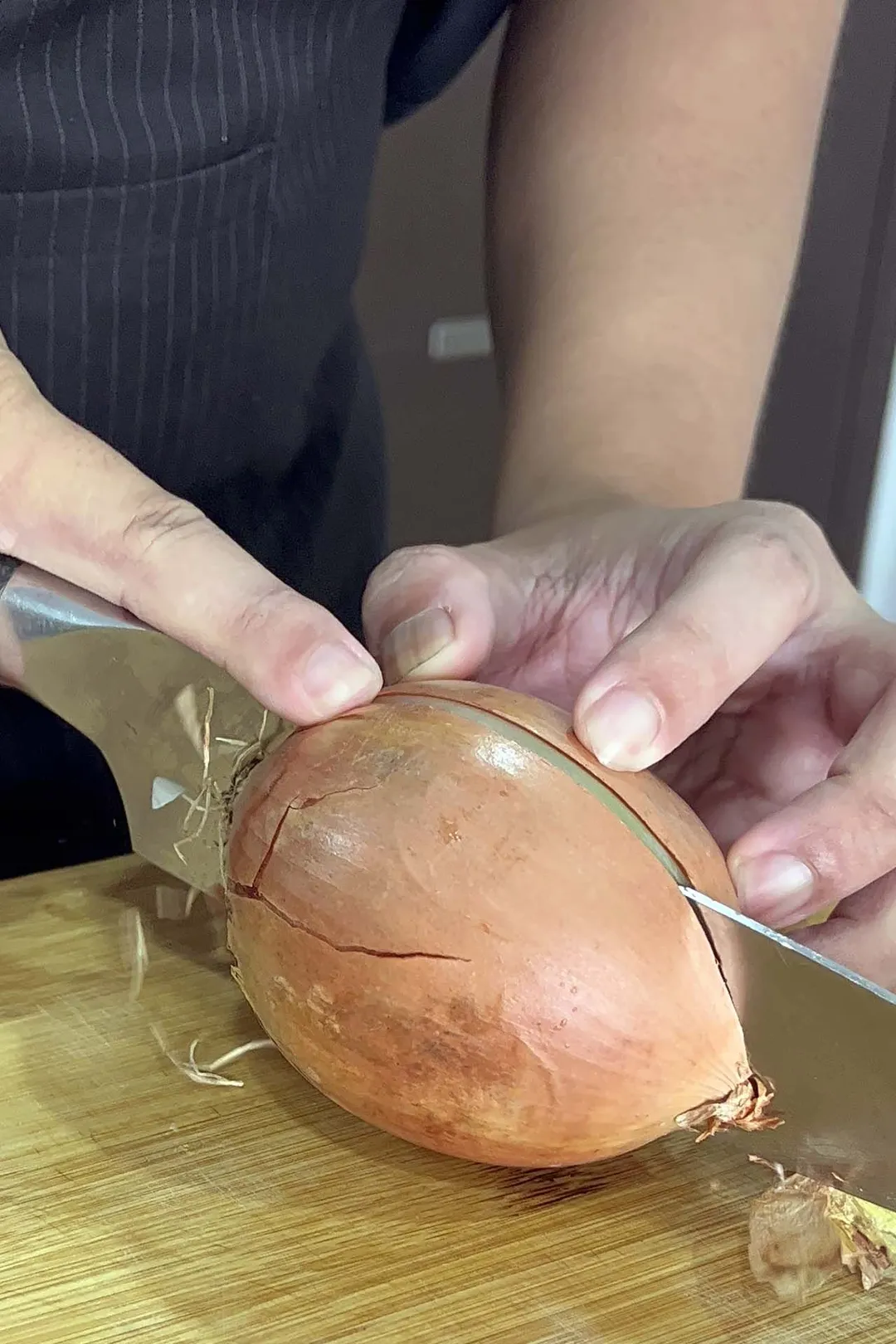
Bring a pot of water to a boil, and blanch these partially-quartered onions for about 2 minutes for small ones, and 4 minutes for large ones. Prepare an ice bath to stop the onions from cooking once they’re blanched. Flip them upside down and leave to dry, then place them in your freezer.
How to Tell if Your Onion Has Gone Bad
Left in the open air, your onion is vulnerable to bacteria and airborne mold particles, and may develop dark spots or mold patches. Don’t just slice off the damaged areas — toss the entire thing away, and check the other ones sitting near it for these signs as well.
Even when they’re placed into the fridge or freezer, spoilage can still take place, but at a much slower rate. That’s why it’s so important to label your produce, and use them up in time before these signs appear.
When the right conditions are met, onions can also sprout, sucking away the nutrients in the bulb. If you slice into an onion and see a small green sprout in the middle, it’s a good time to start freezing them. Those with a large stem and wilted bulb can be tossed away — they’re no longer good for eating.
Luna Regina
Writer, Author